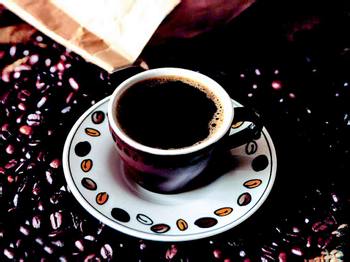Indonesian Java coffee occupies an extremely important position in the history of coffee

Coffee is produced throughout Indonesia (Indonesia), and Java occupies an extremely important position in coffee history.
Coffee trees were introduced to Indonesia by the Dutch in the mid-17th century (some official sources believe it was earlier). The first coffee from Java was sold to Amsterdam in 1712. However, coffee trees in all plantations were destroyed by coffee rust in 1877, and Robart coffee had to be introduced from Africa to replace the original species. Today, only 6% or 10% of coffee beans are Arabian coffee beans. Indonesia is the world's leading producer of Robbins coffee, producing 6.8 million bags of coffee a year, with more than half of the coffee coming from small plantations, accounting for about 90 per cent of the total production.
The best growing areas of the archipelago are in Java, Sumatra (Blawan), Sulawesi (Sulawesi) and Flores.
Java produces exquisite aromatic coffee with relatively low acidity, delicate taste and good balance. Java coffee has better aroma and acidity than coffee from Sumatra and Sulawesi. The best plantations in Java are Blawan, Jambit, Kayumas and Pankur. Java mocha is a mixture of Java coffee and Yemeni mocha coffee.
Sumatra, the second largest island in the Indonesian archipelago, is the center of Indonesia's oil industry, and its rubber and timber are also famous exports. But the coffee in Sumatra is more eye-catching, similar to Java coffee, but with slightly heavier grains. Coffee beans from Mandheling and Ankola are also valued, and the former is even hailed as the world's fullest coffee beans.
The island of Sulawesi, located between Brneo and New Guinea, is sometimes called Celebes. The coffee produced on the island is full of grains and rich in flavor. The best coffee beans come from Kalossi and Rantepao in the southern part of the island. In many brands, you might as well try Celebes Kalosi coffee.
One of the main coffee producers in New Guinea is the Sigri plantation, which has the same overall style as archipelago coffee, full of particles and good balance.
On the whole, Indonesian coffee has a strong flavor, mellow taste, slightly syrup flavor and excellent acidity. Its two main export markets are Germany and Japan, which reflects the excellent quality of the coffee. What attracts consumers is the unique quality of its Arabica coffee beans. You can add milk or cream to high-quality Indonesian coffee without worrying about affecting its taste. Indonesian coffee is divided into six grades, the best of which is AP. But no one is sure what these two capital letters stand for.
When ships replaced sailboats, coffee produced on these islands faced the same problem as Indian coffee from Mysore-that is, consumers were so used to coffee affected by long trips that they were reluctant to accept the taste of this "fresh" coffee. To solve this problem, the Indonesian government tried to copy coffee affected by long-distance travel, storing coffee beans for up to a year. However, what is unsatisfactory is that the taste of this wetted coffee is not so widely accepted that it affects the good reputation of its coffee.
However, Indonesia's "stored" coffee, or "journey" coffee, is still produced today. Its sales brands are generally "Old Government", "Old Brown" and "Old Java".
Although Indonesia produces so much admirable coffee, it is puzzling that local residents prefer Turkish-style coffee to its famous European-style coffee.
Kopi Luwah
Top coffee. The name of this coffee is KOPI LUWAK. The annual output is only about 500 pounds. Scarcity is the most expensive thing. The price of KOPI LUWAK is $300 a pound. The price may reflect its rare characteristics, while its "production" process can be described as "rare".
KOPI (Indonesian, coffee) LUWAK is produced in Sumatra, Zawa, and Sulvish and is part of the 13677 islands of Indonesia. LUWAK coffee is as expensive as gold and silver is not an infinite scenery on a fake island, but because of how it is produced. On these islands in Indonesia, there is a kind of marsupial civet cat, which belongs to the genus tree-borne civet. Locals hate these raccoons because they often eat the most ripe and reddest coffee fruits in coffee trees. I do not know who first thought that this kind of animal can eat, digest and defecate. Some are shameless, desperate, or simply because lazy locals pick out more complete beans wrapped in pulp slime from raccoon droppings. Perhaps it is through the fermentation of enzymes in the animal stomach that this kind of coffee bean has a unique flavor. Interestingly, this particular "production process" is not unique to the coffee industry. The rubber-like ARGAN tree is native to Morocco and produces olive-shaped fruit that can extract ARGAN oil. In Morocco, cypress people drive sheep up trees and let them eat their fruit. Then they collect sheep dung, remove the dung, and squeeze the fruit out of ARGAN oil. ARGAN oil can be used for massage, eating and aphrodisiac. It is assumed that from the beginning, Indonesian islanders have used it to avoid the pain of climbing trees and produce the most expensive coffee in the world. This coffee tastes very thick with a touch of caramel. Although the coffee beans are stale and jungle fragrance, the baked beans have a very complex aroma. Because the stomach acid and enzymes in the digestive system of raccoons are very different from the fermentation process of coffee with water, the coffee is as thick as syrup. KOPI LUWAK coffee tastes mellow and lubricated. Coffee as thick as chocolate pulp gives your tongue a long and clear aftertaste.
Important Notice :
前街咖啡 FrontStreet Coffee has moved to new addredd:
FrontStreet Coffee Address: 315,Donghua East Road,GuangZhou
Tel:020 38364473
- Prev

Introduction of Indian Coffee Asian Coffee Bean producing countries
There are several reasons why Indian coffee is so popular in coffee hobbies, but the most important one is a process used in coffee beans, often called the monsooning process. In the past, passengers or cargo sailed to and from India, which took months to reach Europe. In transit, due to the high air humidity, the taste of raw coffee beans and
- Next

Recommended by coffee and bean producing countries of Reunion
In 1715, the first coffee trees (about 40) were transported from the Yemeni port of Moka to La Runion, but unfortunately only two survived. By 1719, coffee plantations had flourished and the first beans were sold. Over the next few years, the government took a hard measure: the islanders, black and white, had to plant 100 coffee trees a year. The law was amended in 1723
Related
- Detailed explanation of Jadeite planting Land in Panamanian Jadeite Manor introduction to the grading system of Jadeite competitive bidding, Red bid, Green bid and Rose Summer
- Story of Coffee planting in Brenka region of Costa Rica Stonehenge Manor anaerobic heavy honey treatment of flavor mouth
- What's on the barrel of Blue Mountain Coffee beans?
- Can American coffee also pull flowers? How to use hot American style to pull out a good-looking pattern?
- Can you make a cold extract with coffee beans? What is the right proportion for cold-extracted coffee formula?
- Indonesian PWN Gold Mandrine Coffee Origin Features Flavor How to Chong? Mandolin coffee is American.
- A brief introduction to the flavor characteristics of Brazilian yellow bourbon coffee beans
- What is the effect of different water quality on the flavor of cold-extracted coffee? What kind of water is best for brewing coffee?
- Why do you think of Rose Summer whenever you mention Panamanian coffee?
- Introduction to the characteristics of authentic blue mountain coffee bean producing areas? What is the CIB Coffee Authority in Jamaica?

